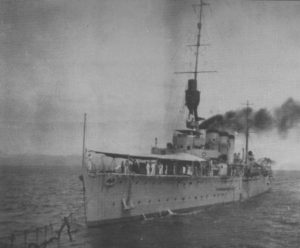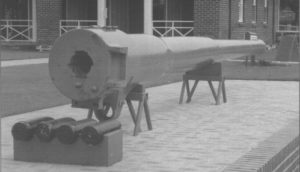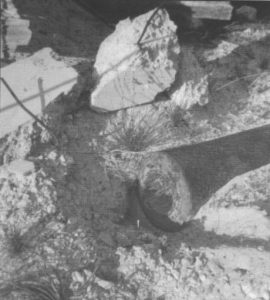- Author
- Jeffrey, Vic
- Subjects
- Ship histories and stories, History - WW1
- Tags
-
- RAN Ships
- HMAS Brisbane I, HMAS Melbourne II, HMAS Sydney I
- Publication
- December 1997 edition of the Naval Historical Review (all rights reserved)
It has often been incorrectly thought that the two 6-inch guns located at the World War Two Bickley coastal gun battery came from the famous World War One cruiser HMAS Sydney I. Bickley Battery was located on the southern tip of Rottnest Island in Western Australia.
History books reveal how HMAS Sydney I wrote her name into naval history when she sank the German raider Emden at Cocos Islands on November 9, 1914 in Australia’s first naval engagement.

In fact the two British-manufactured Mark XI 6-inch naval guns at Bickley Battery came, one each, from HMAS Sydney’s sister-ships, the cruisers HMAS Melbourne and HMAS Brisbane.
These 6-inch guns had been part of Chatham-class cruisers eight single mount main armament.
The guns were emplaced in 1938 with the prime role of denying the use of the South Passage between Rottnest and Carnac Islands to enemy vessels and a secondary role as a “stand-by battery” for the Arthur’s Head Battery at Fremantle as part of the Port of Fremantle’s defences.
Each of these batteries took it in turns as the “examination battery” which was responsible in conjunction with the Navy for the examination of all vessels, apart from warships, entering Fremantle Harbour.

Gun No. 2309, manufactured in England, the barrel of which is on display at Kingstown Barracks on Rottnest Island today was the No. 2 port gun aboard the cruiser HMAS Melbourne between 1912 and the end of World War One.
It was replaced in 1918 and returned to the Royal Ordnance Factories at Leeds in England for refurbishment on December 3, 1918.
Its whereabouts for the 20 years until its return to Australia in 1938 are unknown, it most likely remaining in storage in England.
The other gun, No. 2328 which is today on display outside of the Army Museum at Bulwer Street, East Perth saw service aboard the first-Australian built cruiser, HMAS Brisbane in World War One.
This gun was at Woolwich, London in 1913 and sent to Australia on September 28, 1914 as part of the armament of HMAS Brisbane, then under construction at the Cockatoo Island Dockyard in Sydney.
Commissioned on October 30, 1916 HMAS Brisbane was soon dispatched to the Mediterranean via Singapore for service with the Royal Navy.
As this gun, No. 2328 was recorded at Plymouth on May 22, 1917 it must be assumed that it had been replaced early that year before HMAS Brisbane was dispatched to Colombo as a unit of the East Indies Squadron searching for German raiders operating in the Indian Ocean.
It appears that after its removal from HMAS Brisbane, this gun was moved about as a spare being at Simonstown, South Africa in 1919, Chatham in England in 1925 and finally arriving back in Sydney, on August 27, 1938 as one of three Mark XI guns sent to Australia in exchange for worn guns.
The other two which came with it, Nos. 2046 and 2320 were relocated at Port Moresby in New Guinea.
When the two mounts for these 6-inch guns were completed in 1938, they were moved from temporary cruciform mountings at Fort Swanbourne located near Fremantle, across to Rottnest Island and installed, forming part of the Army’s 1lth Heavy Battery, 3rd Heavy Brigade.

Photo: Vic Jeffery




